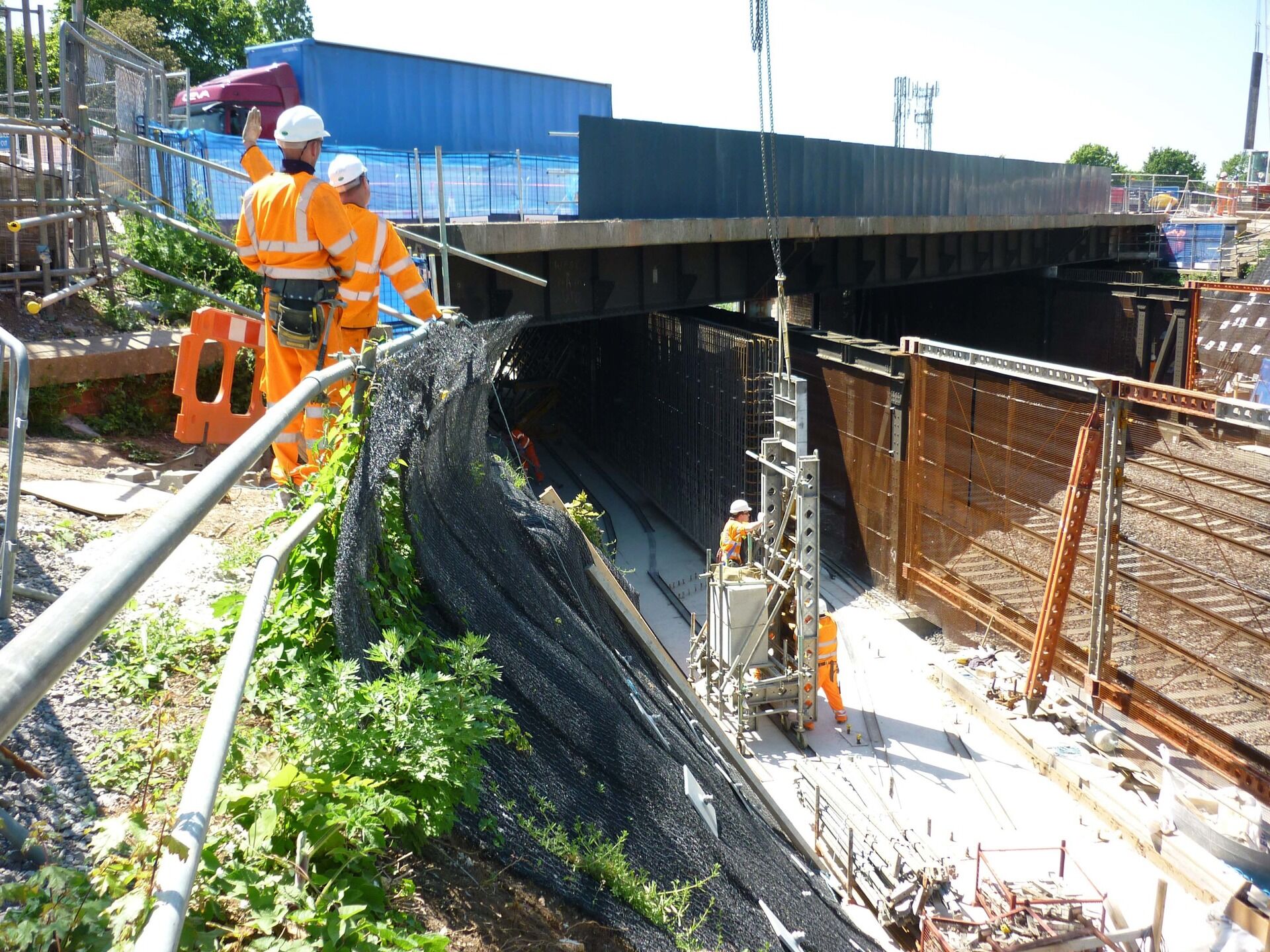Temporary Works Design (Above Ground)
The course encourages the exchange of experience by means of delegate comments and questions, group discussion and team exercises. Sessions include types of formwork and scaffold design. The course is equally suitable for contractors, consultants and specialist sub-contractors.
Check out the companion course Temporary Works Design (Below Ground).
Background
Temporary works is a particular source of risk on site, both from a safety and commercial point of view. Following a series of collapses in the 1970's, the Bragg report and subsequently BS 5975 were produced, to assist designers and users of temporary works.
The industry still recognises today, along with the HSE, the risks associated with temporary works with the competency of the designer being a key point of concern.
Correct design, coordination and execution of temporary works is essential to the overall requirement of any project to be completed in accordance with safety, time and budget, health and environmental constraints.
Temporary works design is different from design of permanent works in several respects, including:
- Importance of understanding site operations and constraints
- Need to work closely with the contractor
- Importance of erection methods and co-ordination
- Formwork and Falsework in particular are generally loaded to their full capacity
Temporary works therefore has a code of practice BS5975 that in addition to technical issues also contains a section on procedural control and coordination.
Sessions begin at 9:00 and finish at 17:00. All times except the start time are approximate and may be adjusted to suit natural breaks in the lesson.
Session 1
- BS5975:2024 – Part 1 Management procedures for the control of temporary works – Code of practice
- Bragg Report 1975
Session 2
- Legal Aspects/CDM 2015
- Roles and responsibilities of key personnel involved in the design and management of temporary works design
Session 3
- Wall and Column Formwork
- Group Exercise
Session 4
- Falsework and Soffit Formwork
- Group Exercise
- Lateral Stability Importance
Session 5
- TG20 and Basic Scaffold calculations (leg load and tie load)
Session 6
- Forming Openings in Masonry Walls
- Group Exercise
Session 7
- Hoardings/Gates and fencing
Session 8
- Designers Risk Assessment and Method Statement
Tutor
Luciana Lightman
Luciana is a Chartered Civil Engineer with over 20 years of experience in the construction industry, specialising in temporary works. With dual professional memberships in the UK (Institution of Civil Engineers) and Brazil (Regional Council of Engineering and Agronomy - Crea), Luciana brings extensive expertise in temporary works design, management, and consultancy.
Her career includes key roles in major projects, such as the refurbishment of the Old War Office and Tottenham Court Road Station, stabilisation work for several London Underground stations, the Olympic Park construction, and significant rail projects under Control Period 7 (CP7). Luciana’s contributions range from designing complex scaffolding and bespoke steel structures to developing temporary works procedures, implementing effective processes, and appointing key personnel, demonstrating her ability to address a wide range of temporary works challenges.
Since 2023, Luciana has been a member of the British Standard Institution (BSI) Committee for temporary works and the Temporary Works Forum (TWF), showing her commitment to supporting industry standards.
Luciana’s approach combines practical project experience with a focus on temporary works safety, process efficiency, and effective solutions, making her a valuable resource in temporary works training and consultancy.
By the end of this course, participants will be able to:
- Understand the critical aspects of temporary works above ground, including safety, compliance, and effective risk management
- Assess temporary loads and identify potential failure modes, taking practical constraints into account
- Appreciate the core principles of temporary works above ground design methodologies
- Calculate concrete pressures and design systems for formwork and falsework
- Apply TG20:21 procedures to calculate wind loads
- Produce a basic needling design
- Understand the design criteria and load calculations for site hoardings
- Analyse loads and recognise different modes of failure
This training course has been specifically developed for:
- Graduate Engineers
- Temporary Works Coordinators and Supervisors
- Site Engineers responsible for temporary works
- Project Managers
- Mid-level Professional Engineers
- Engineering Managers
- Engineers seeking to deepen their understanding and expertise in temporary works design methods
Classroom/Virtual Training
Product code: C0513


